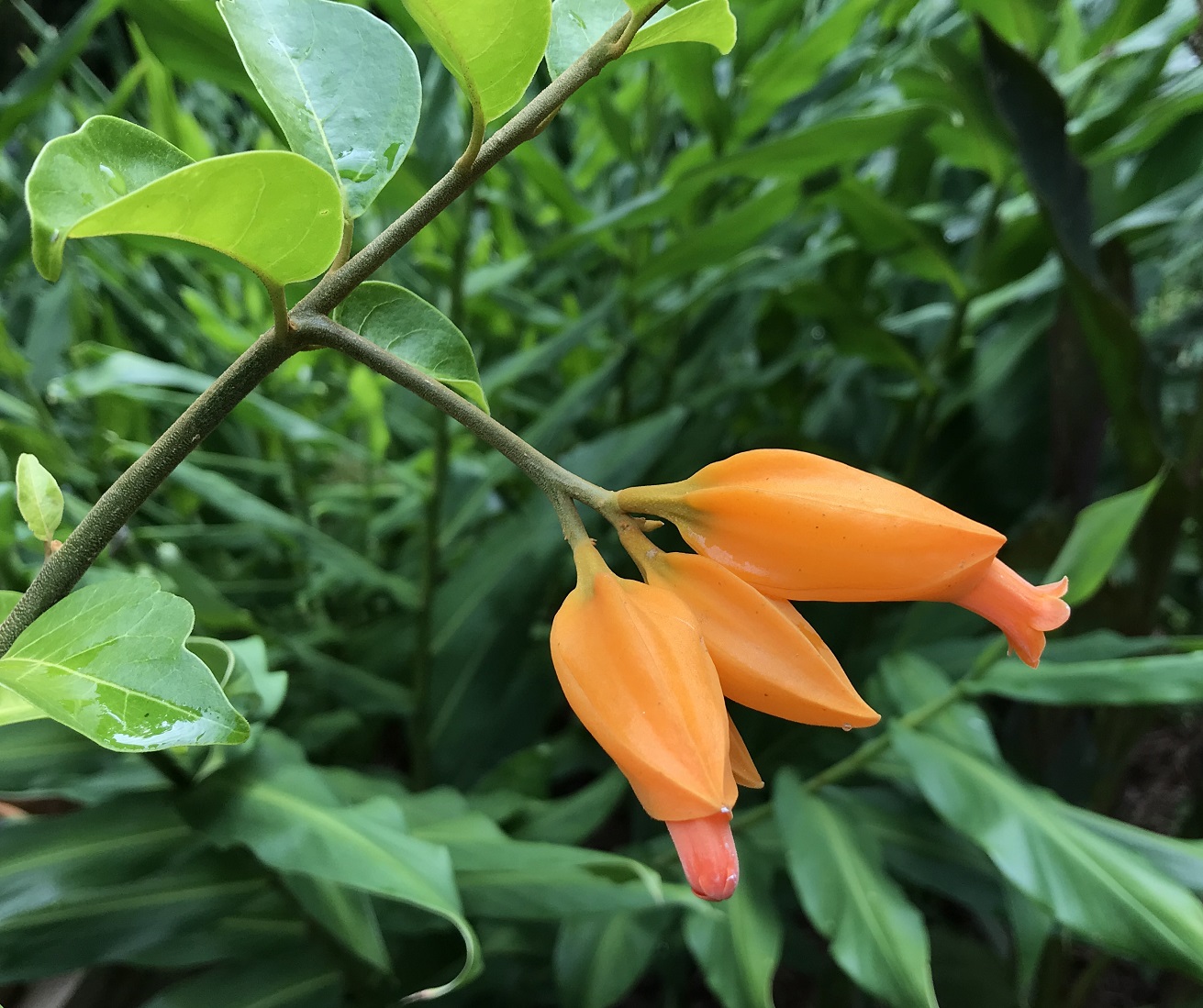
You really can’t go wrong with a hummingbird-pollinated plant. The little birds are attracted to bright colors–primarily red, but also orange, yellow, and magenta–and flowers adapted to hummingbird pollination generally have interesting tubular or bell-like shapes. The only downsides to the hummingbird pollination syndrome are that the flowers usually lack fragrance, and the plants are often not heat-tolerant; hummingbird-pollinated plants are often native to tropical cloud forests where hummingbirds are most diverse and flying insects relatively rare.
Juanulloa mexicana (syn. J. aurantiaca) is a semi-epiphytic shrub that has all the good qualities of a hummingbird-pollinated plant but also exhibits considerable heat and drought tolerance. The plant itself is rather messy–or “interesting” if we want to be charitable. It has long, poorly branched stems that presumably ramble through the branches of host plants or over rocks in its native habitat. The leaves are widely spaced, and adventitious roots can emerge from almost anywhere along the stems. The roots adhere tightly to any surface they come in contact with (greenhouse benches, other pots, the gravel floor of the greenhouse, etc), and once they become large and woody, they can sprout their own leafy stems. When the plant is grown in a pot, roots will creep over the edge and emerge from drainage holes. The thin leaves are subject to infestations of mealybugs and spider mites, and they drop in the autumn, leaving the plant a leafless tangle of stems and roots for much of the winter.
But when it blooms, I forget how inelegant the plant is. The tubular flowers, which grow on short inflorescences, generally near the end of a stem, are dark orange and nestle in a slightly lighter orange calyx. I generally see flowers during the summer, but the plant can also bloom in winter while leafless. My plant seems to be self-sterile; despite numerous visits from hummingbirds and several attempts at hand pollination, I have never obtained seed.
Fortunately, however, J. mexicana is very easy to propagate from stem or root cuttings. I have used moist sphagnum moss and commercial potting mix with equal success, and I suspect that cuttings would grow just fine in damp paper towels or gravel. Stem cuttings will flower more quickly, but root cuttings might give you a more interesting specimen. One of my plants, grown from a piece of root that invaded a neighboring pot, has produced an above-ground tuber which is currently about the size of a plum or very large hen’s egg. Lignotubers are not uncommon in epiphytic shrubs (e.g. epiphytic Ericaceae), and several species of the related genus Markea produce tubers that are often hollow and inhabited by ants. However, I have been unable to find any literature describing tuber growth in Juanulloa. I am unsure if this is normal (i.e. a lignotuber) or abnormal growth (i.e. a burl or something similar). If anyone has any insight, please let me know. I’d be particularly interested to know whether seedlings produce a similar tuber.



What a curious little thing, I wonder if it’s hollow or pithy or as solid as the rest of the root.
I never realized that’s why so many of the brightest of S. American plants are so fussy about heat. Thanks!
LikeLiked by 1 person
I think it is solid, or at least thick-walled. The scar is hard to see now, but a squirrel took a chunk out of it one summer, and it seemed to be solid.
LikeLike